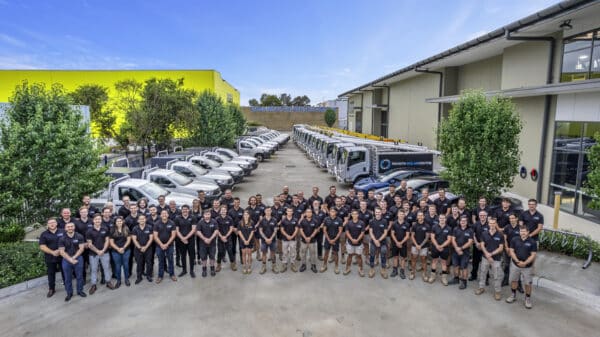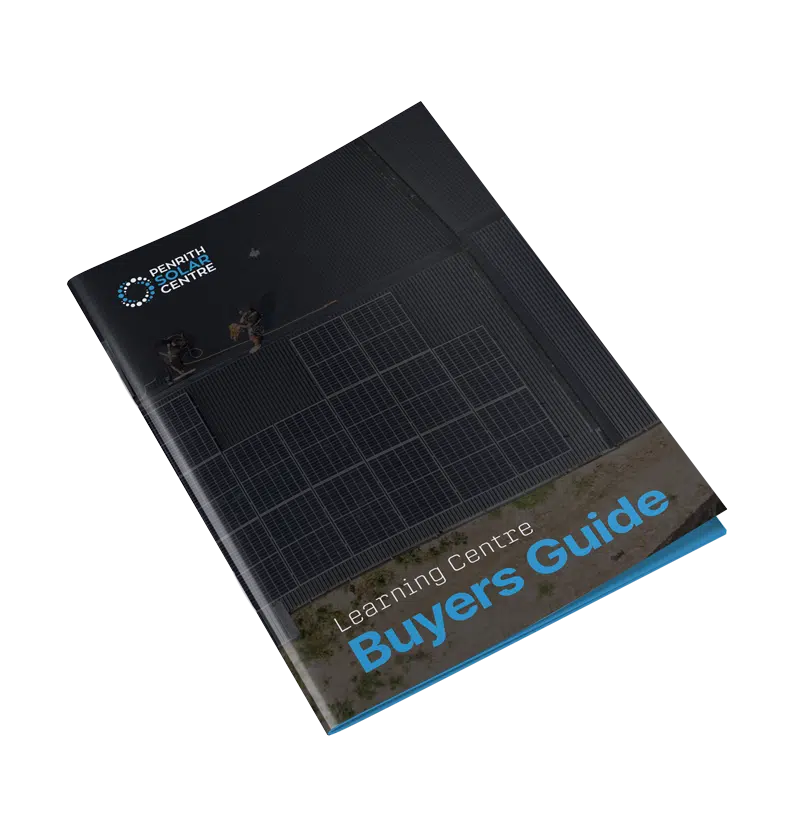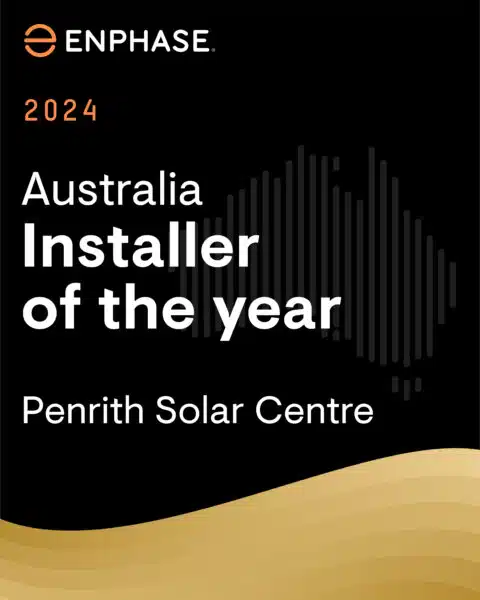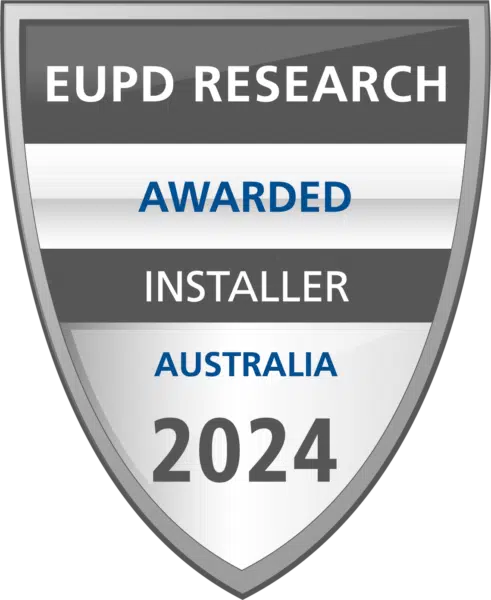
Tesla’s Powerwall 3 has created a lot of excitement in the solar community. Tesla’s reputation for innovation has driven many of our customers to investigate the Powerwall 3. But, like any product, it’s not perfect.
At Penrith Solar Centre, we take a good, hard look at every product we install. There are advantages and disadvantages to every component in your solar system. Deciding on what type of solar system you want requires a transparent perspective. In that spirit, we’re going to look at some of the problems with the Powerwall 3, the latest addition to our product line.
In this article, you will learn:
- Common Problems with Powerwall 3
- Technical Concerns for Powerwall 3
By the end of this article, you’ll have an honest perspective on the problems with Powerwall 3 so you can make an informed decision.

Common Problems with Powerwall 3
Weight and Installation Concerns
One of the biggest problems with the Powerwall 3 is its weight. At 130 kilograms, it’s much heavier than many other solar batteries. This means that installation can be tricky and will require a bit of planning.
If you want to mount it on a wall, you need to be extremely precise. Hitting the mounting points perfectly is crucial, especially on a timber stud wall. Brick walls are sturdier, but even they can struggle with that much weight.
Because of this, it’s safer to floor-mount the battery. When you floor-mount it, you eliminate the pressure on the wall.
Poor installation can lead to safety risks.
Fortunately, Tesla has worked to address this issue with their new Powerwall 3 dolly. Installers will use this piece of equipment provided by Tesla to better manoeuvre the Powerwall 3.
The dolly has a locking plate that makes installation precise every time. The dolly gently raises and lowers the Powerwall 3, so a single person can handle this aspect of the installation. This is particularly useful in tight spots.
Lack of Whole-Home Backup for Three-Phase Homes
Another issue with the Powerwall 3 is that it doesn’t provide whole-home backup for three-phase homes. In a three-phase home, electricity is divided across three separate wires, or “phases.” The Powerwall 3 can only back up one of these phases at a time.
This means that even if you install three Powerwall 3 units—one for each phase—you’ll still only have single-phase backup. During a power outage, only the devices connected to that phase will be powered. The other phases won’t have backup power.
For homes that rely on three-phase power, this limitation is frustrating. You might need to invest in additional equipment or consider other solutions to ensure that your entire home is backed up during an outage. Until Tesla releases a three-phase version of the Powerwall, this will remain a significant limitation.

Limitations with Neurio Meter and Compatibility Issues
The Powerwall 3 also has limitations related to its Neurio meter. This meter allowed users to monitor solar production from different locations, like a shed or other outbuildings. Tesla used to offer compatibility with a wireless Neurio meter with the Powerwall 2.
It made it easy to track energy usage and solar output from various points on your property. However, the Powerwall 3 isn’t compatible with this product.
Tesla is currently working on a new meter, but it’s not yet available. This creates compatibility issues for homes with complex solar setups. If your solar panels are far from the battery or spread across multiple buildings (most rural sites), there may be additional installation considerations.
In some cases, you might need to dig a trench and run cables to connect your panels to the battery. This can be expensive and inconvenient, especially for rural properties. Until Tesla releases its new meter, the Powerwall 3 may not be suitable for every installation.
If you’re interested in learning more about installing Powerwall on a three-phase site, you might want to check out the following article titled, Installing Powerwall 3 on a Three-phase Site.
Technical Concerns for Powerwall 3
DC Architecture and Safety Considerations
The Powerwall 3 uses DC (direct current) architecture, which is riskier for your home than AC (alternating current) architecture. In an AC architecture system, AC power is converted from DC to AC at the solar panel. Then it travels down to the home in a less volatile state.
In a system with DC architecture, like Powerwall 3, the conversion from DC power to AC power happens in the Powerwall. So the high-voltage DC power is in a more volatile and aggressive state as it makes the journey from your solar to your Powerwall.
In Australia, new regulations allow up to 1000 volts DC to flow from your roof to the inverter. The Powerwall 3 limits this to 600 volts, which is safer, but it’s still something to think about. DC systems don’t shut down as easily as AC systems in an emergency, which could be a concern if you’re worried about safety.
Additionally, the lack of rapid shutdown features on the Powerwall 3 might be an issue. Rapid shutdown is important because it allows the system to quickly cut off power in an emergency, such as a fire. This is already compulsory in the United States, so the Powerwall 3 requires additional components to make it compliant. This is not available in Australia.
Without this feature, there’s a greater risk of electrical hazards, especially in situations where first responders need to work on or near the system. They might let your house burn down if they can’t switch off the solar and it’s still producing electricity. After all, there are 600 volts of DC in the wires between the solar and the Powerwall 3.
While that sounds bleak, it’s important to remember that a good installation reduces these risks. DC power is safe if it’s installed correctly. It’s crucial to make sure you’ve vetted your solar installer. Only hire accredited solar installers approved by Solar Accreditation Australia (SAA).

Phase Imbalance Issues in Three-Phase Homes
There are also issues with phase imbalance in three-phase homes. In New South Wales, regulations limit the amount of imbalance allowed between phases. For example, you can’t have more than 5kW of difference between the phases. The Powerwall 3’s 11.04 kW inverter can create problems in this area.
Because of local DNSP inverter limitations, the Powerwall 3 must be programmed to 10kW. This means that in order to balance the phases, you’ll need additional equipment (like additional Powerwalls or inverters) to get the other phases within 5kW of Powerwall 3.
If you have a Powerwall 3 installed on one phase and the other phases aren’t balanced, you end up with an imbalance that violates these regulations.
Even with three Powerwall 3 units, you’re still limited to single-phase backup, as we mentioned earlier.
If you’re interested in learning a bit more about single-phase and three-phase sites, you might want to check out the following article titled, Single-Phase vs. Three-Phase: How Are They Different?
Conclusion: Is Powerwall 3 Worth It?
The Powerwall 3 has several notable problems. Its weight, lack of whole-home backup, limitations with the Neurio meter, and technical concerns with DC architecture and phase imbalance are important to consider.
However, it still offers many benefits, especially for single-phase homes. If you understand its limitations and are prepared to work around them, the Powerwall 3 can still be a valuable investment for home energy storage.
For complex solar setups, you might need to wait for Tesla’s new meter or find alternative ways to monitor your solar production. In the meantime, working with an experienced installer who understands these limitations can help ensure that your system is set up correctly.
At Penrith Solar Centre, we love the Powerwall 3. We wouldn’t carry it if it weren’t among the best in its class. It’s important to weigh the benefits against the challenges of finding a customised solar system for your home. Your energy needs and goals are unique. You need an installer who can provide options for your solar setup.

If you’d like to learn more about the price of a Powerwall 3, you might want to check out the following article titled, How Much Does a Tesla Powerwall 3 Cost?










